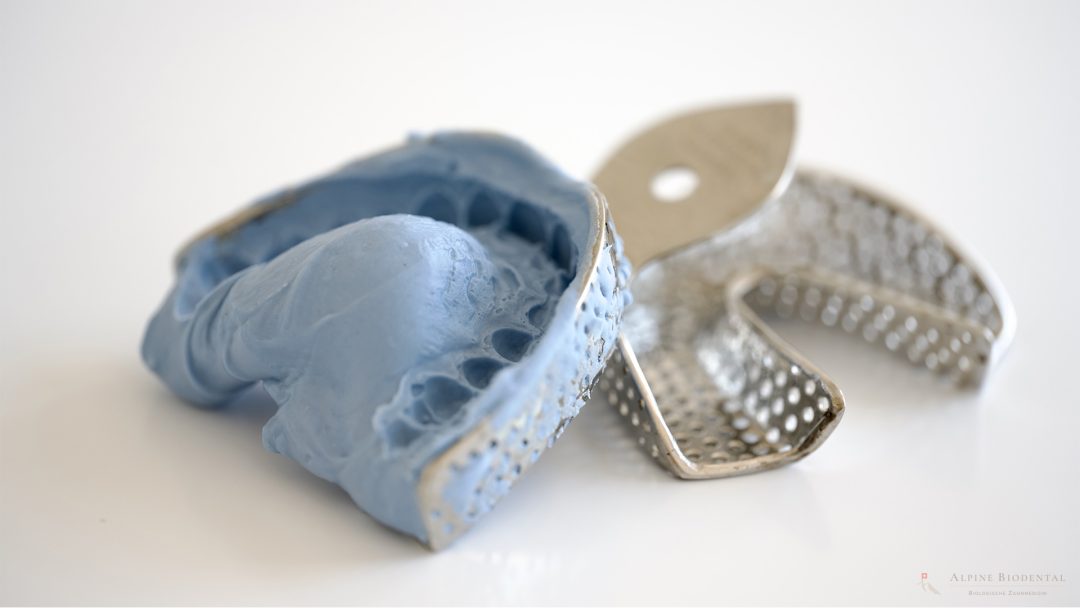Biological impression

To create dental prosthetics, the dentist needs to take an impression of the patient’s teeth. Based on this impression, the dental technician in the dental laboratory can individually craft the corresponding ceramic crown or bridge.
An alternative to traditional impressions with impression material is digital impression.
Materials for Impressions
Impressions for the creation of dental prosthetics can be based on silicone, polyether, or hydrocolloid. These materials differ in their processing, precision, and biocompatibility. The choice of material should generally be considered on an individual basis depending on the patient’s case.
Hydrocolloid - Biological Impression
The most natural impression material that simultaneously provides the highest level of detail is hydrocolloid. It is a material based on algae with excellent impression properties.
The technique of taking impressions with hydrocolloids is relatively complex. However, the results more than justify their use. Therefore, we use hydrocolloid not only for impressions of natural teeth but also for inserted ceramic implants.
One drawback of hydrocolloid is that an impression can only be poured with plaster once.
Silicone
Silicone, as a material for impressions, exhibits good detail accuracy, although biocompatibility should be critically assessed. Nevertheless, there are some good and compatible silicone-based impression materials that can be used in specific health situations.
Polyether
Currently, from a compatibility perspective, we do not recommend polyether, as several studies have shown increased toxicity. The same precision can be achieved with hydrocolloid and silicone without the potential drawbacks of polyether.
Dr. med. dent. Artur Hein
Biological impressions with hydrocolloid are ideally suited for precise imprints. We are more than happy to assist you.

Further information
The additional information aims to provide you with a better overview of the subject area.